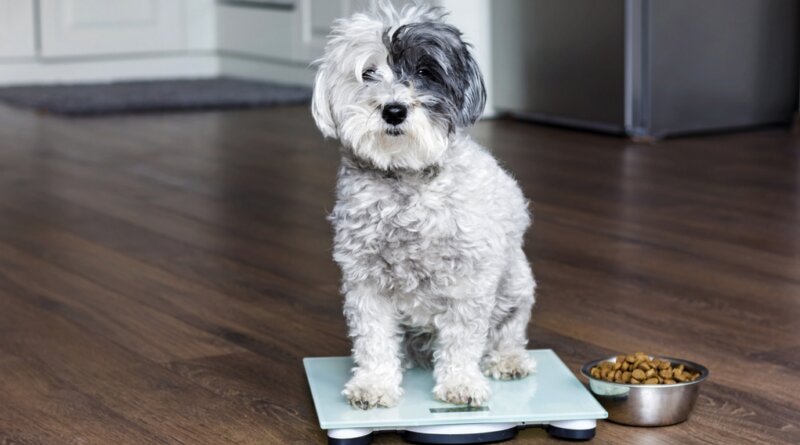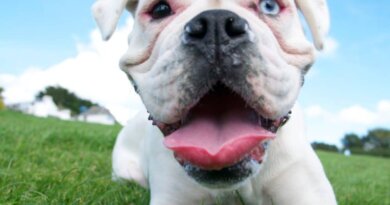How to Put an Overweight Dog on a Diet to Lose Weight?
In recent years, dogs – just like their human counterparts – have become more and more overweight (1). In fact, studies show that canine obesity has become an epidemic, with the average weight of cats and dogs consistently on the rise. An obese dog is more prone to a variety of health issues including an early death (2), but can an overweight dog be put on a diet?
Yes, dogs can be put on a “diet” of sorts to help them lose weight, but there are more pet owners who need to know about helping a fat dog lose the extra pounds. Let’s dig deeper.
What are the dangers for overweight dogs?
Canine obesity poses plenty of health risks for dogs. Extra pounds don’t just affect your dog’s health, but his movement and overall quality of life (3).
Overweight dogs experience strain on their back, legs, and paws. Being obese also puts unnecessary stress on your dog’s joints, resulting in earlier signs of canine arthritis (4).
Studies have also found that obesity results in heart disease in dogs (5, 6) and cancer, hypertension, respiratory problems, poor heat tolerance, and surgical complications (7, 8).
When are dogs considered overweight or obese?
Vets confirm that dogs are considered overweight when the weight is more than 15% above ideal. A canine is considered obese when its weight is more than 30% of ideal.
To establish a dog’s ideal weight, usually, a Body Condition Score (BCS) chart is used and ideally, you’ll need to have a conversation with your veterinarian.
If your veterinarian tells you that your dog is overweight according to the BCS chart, it’s time to help your dog drop some pounds, but do it in a safe and regulated way.
Dogs can be put on a diet, and there are many ways to do so. It’s best to work with a canine nutrition specialist, whether it’s your vet or a licensed canine nutritionist, to create a diet plan for an overweight dog that will meet all of your canine’s nutritional needs without depriving him of any dietary requirements that his body needs to function.
In addition to your dog’s diet, a well-structured exercise routine for the dog is essential as well. Studies have found how exercise regimes can effectively help dogs get in shape (9). In this article, I’ll cover everything pet owners of overweight dogs must know, so read on.
READ ALSO: The Best Weight Loss Dog Food for Fat Dogs
Should My Fat Dog Get On a Diet?
It is estimated that more than 50% of the canine population in the US is overweight or obese. However, most owners do not realize that their dogs are overweight because they are unable to judge their weight and body size accurately, according to studies (10, 11).
The “ideal” body weight for each breed and each individual seems to have been forgotten by pet owners. Therefore, it’s important to keep in mind that there are specific guidelines that apply to dogs of all breeds and sizes that pet owners must follow.
The above-mentioned Body Condition Score chart provides accurate measurement for a dog’s body assessment, as long as pet owners understand how to follow it (12, 13).
Speak to your veterinarian about your pet’s weight, and ask for their assistance if you’re having trouble following the guidelines from the Body Condition Score chart.
Two scoring systems exist: a 1-9 scale and a 1-5 scale. The World Small Animal Veterinary Association recommends using the 1-9 scale (PDF). It’s important to stress that you must follow the chart rather than judge the dog yourself since most dog owners are unable to accurately assess what a healthy weight and body size is for their dogs (10, 11).
Vets see this all the time:
In clinical practice, when I show owners examples of “ideal” body weights for particular breeds, they usually think that the “ideal” is “too thin.”
Your veterinarian can determine if a medical condition is causing your dog to be overweight through routine screening blood tests and a physical examination.
For example, low thyroid hormone levels, known as hypothyroidism, and Cushing’s disease known as hyperadrenocorticism, can cause dogs to become overweight. There many other factors that come into play here, but too many to mention in the article.
INTERVIEW: The Risks of Canine Obesity & How To Keep Your Dog Fit
How Do I Put My Overweight Dog on a Diet?
The most difficult part for owners is to refuse food for their pets. It’s understandable, but just remember that you’re doing this for their own health and lifespan.
If your dog is clinically overweight or obese, your veterinarian or canine nutritionist will make a specific recommendation for his weight loss diet. Prescription dog food is not necessary for weight loss, and even well-designed homemade dog food recipes can work.
Occasionally, a veterinarian may recommend a prescription dog food diet for overweight dogs if there’s a metabolic or endocrine disorder, which obesity is known to cause (14); however, I recommend getting a second opinion on this and doing further due diligence.
There are some regular commercial dog food brands available over-the-counter to help your dog lose weight that will be lower in calories yet contain all necessary nutrients.
Some of the more popular dog foods for weight loss include:
1. Hill’s Science Diet Metabolic

If your dog prefers canned food, a moist vegetable-beef stew is available. Overweight and obese dogs with joint problems, like arthritis, can benefit from the Metabolic + Mobility formula, which contains glucosamine and chondroitin sulfate.
When your dog is on the Hill’s Metabolic diet, he does not have to “go without,” as prescription dog treats are available too. The treats are made with whole grains and veggies like carrots, but make sure that your dog really needs this; otherwise, avoid it.
2. Hill’s Science Diet r/d

The company claims that this formula is proven to reduce fat by up to 20% in just 3 months; however, I have yet to see any evidence of this in the form of a well-design study. Nevertheless, the natural high fiber content helps to keep your pet feeling satisfied even though he’s eating less calories.
3. Royal Canin Satiety Support Weight Management

If your dog prefers canned food, a wet formulation is available from the same Royal Canin brand. Dogs with mild to moderate issues of canine arthritis may benefit from this dog food, as it contains the joint support compounds glucosamine and chondroitin sulfate, but in extremely small amounts.
RELATED: How to Motivate an Overweight Dog
Is weight loss-friendly dog food really necessary?
No, not really necessary. The only reason to feed one of the above-mentioned weight loss dog food diets is if you’re worried that you may miscalculate the nutrition and calories for the dog.
Regular well-rated commercial dog food brands are just as good, as long as you ensure that your pet gets all the nutrition he needs while keeping the calories at bay as per your veterinarian’s or canine nutritionist’s recommendations and guidelines.
A few top-quality over-the-counter dog food options include:
There are some dog food brands that vets recommend and they usually like them better for a specific set of nutrients. But no dog food brand is perfect for all dogs, therefore, you must assess your own dog’s needs, his current weight, and goal weight, and go from there.
RANKED: Top 15 Best Low Fat Dog Food Brands
Is a homemade dog food diet okay?
Yes, you can feed your overweight dog a homemade diet to help him lose weight. However, the main disadvantage of feeding your dog homemade food is having a significantly harder time accurately calculating calories and nutrients.
In fact, since dogs are much smaller than people, and precision in calorie counting is key, I would say that accuracy here is next to impossible unless you truly dedicate yourself to this dietary and lifestyle change.
Studies have shown that homemade diets always lack nutrients for dogs, resulting in many different health problems. There are a number of other dangers associated with a homemade diet. Add to that calorie counting, and you got yourself a job.
Portion Control for Overweight Dogs

Poor portion control when feeding dogs, as well as feeding humans food from the table and too many snacks, all contribute to the problem.
If you want your dog to lose weight, start by understanding dog food labels and nutrition, and commit yourself to do these three things:
- Feed your dog according to the label recommendations.
The dog food will have a guideline on the side of the bag recommending a certain number of cups or grams to be fed per day for certain body weight. Each dog food brand is different, so this recommendation will change based on the brand and type of dog food.
It’s best to speak to your vet or canine nutrition expert to devise a weight loss plan for your canine, and then use a few dog food brands as examples for feeding.
- Measure everything correctly.
Use a standard 1-cup dry measuring cup to measure out the food. If you have a small dog, use a ½ cup measure or ¼ cup measure for greater accuracy. For the best accuracy, switch to metric and weigh out your dog’s food in grams on a kitchen scale.
- Eliminate “junk” snacks and human food.
No more pieces of cheese, hot dogs or other high-fat, high-calorie human foods. Switch from ‘puppy pepperoni’ to something a little more wholesome. Your dog will still enjoy getting a snack even if it isn’t something salty, fatty or meaty.

Most dogs love the crunch of raw fruits or veggies. These are all high-fiber, low-calorie treats that won’t pack on the pounds and will plenty of nutrition for your dog.
There are some healthy dog treat options as well. They are usually higher in fiber, lower in calories, and contain more nutrients. But it’s best to avoid dog treats altogether.
No matter how healthy human food treats are, always remember to feed your dog the correct portion of snacks because they still contain calories that you must count.
For example, a thumb-nail-sized piece of carrot 2 to 3 times a day is enough to let your dog know that he’s a good boy without sugar or calorie overload. It is very likely that your dog won’t care how much of a snack he’s getting – he will just be thrilled to be getting one.
READ NEXT: Vet’s Tips on How to Advise on the Best Dog Diet
References
Related






